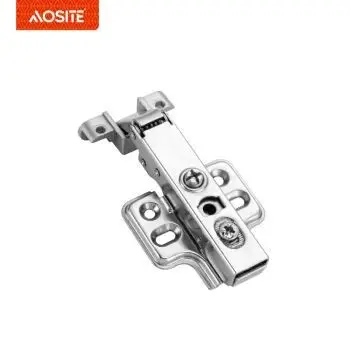Aosite, since 1993
Whether the car is safe or not cannot be determined by the hinge alone_Industry News
The Importance of Vehicle Safety: Looking Beyond Hinge Thickness
When it comes to vehicle safety, there are many misconceptions that consumers often focus on. In the past, concerns were raised about the thickness of the sheet metal or the rear anti-collision steel beam. While it is essential to consider the energy absorption of the entire vehicle, it is unfair to criticize consumers for having these misleading concepts.
Even renowned car manufacturers like Volvo fell into the trap of blindly increasing the thickness of the body sheet metal in the early days. This resulted in a rollover accident where the vehicle's appearance remained relatively intact, but the passengers inside suffered fatal injuries due to the force of impact. This incident emphasizes the need to effectively disperse the impact force during a collision.

Recently, another article caught my attention, focusing on "hinge thickness." The reporter measured the hinge thickness of various cars and classified them into "upscale" and "low-end" categories based on the materials used. This approach mirrors the past criticism of Japanese car sheet metal thickness, attempting to generalize and mislead consumers in judging a car's safety. It wouldn't be surprising if someone writes an article in the future about the number of airbags a car has.
The article presents a comparison table of SUV door hinges worth approximately 200,000 yuan. However, it is crucial to note that the safety of a car, as well as the conscience of the car manufacturer, should never be judged solely by the thickness of the hinge. As mentioned earlier, vehicle safety must be evaluated holistically. Merely judging a hinge and relying on thickness data is insufficient. Objective perspectives should consider thickness, material, area, structure, and process.
From the car models listed in the report, it becomes evident why some hinges are labeled as "low-end." These hinges adopt a two-piece design, while the "upscale" car models have hinges designed with a single screw and a single fixed cylinder. Is this merely a coincidence? It is clear that two types of door hinge designs exist, and determining which is superior cannot be based solely on the thickness of the steel sheet. Thickness, material, area, structure, and process all play pivotal roles.
Additionally, when assessing the fixing mechanisms of car doors, it is important to recognize that hinges are not the sole components involved. Each door is equipped with a fixed buckle, and the strength of this buckle might not be as great as the hinge on the other side. In the event of a side impact, concerns arise not just about the hinge but also about the stability of the hexagonal lock.
The fixation of the car body involves more than just hinges. Hexagonal locks on the B-pillar and C-pillar are responsible for the secure attachment of the door. These locks may have stronger structural integrity than the hinges. In a side collision, they may be the first point where structural detachment occurs.
The primary goal of vehicle safety is to minimize passenger casualties. In unavoidable collisions, a strong body structure becomes the last line of defense. While features like automatic braking systems are crucial, it is essential to complement them with good driving habits and proper seat belt usage. These practices prove far more practical than obsessing over hinge thickness.
At AOSITE Hardware, we understand the significance of vehicle safety. Our hinges are well-designed, reliable, energy-saving, and environmentally friendly. We offer customers a worry-free user experience while maintaining high standards in our management system and product quality.
Whether the car is safe or not cannot be determined by the hinge alone. It is important to consider various other factors such as the overall design, quality of construction, and safety features in order to determine the safety of a car.
Mob: +86 13929893479
Whatsapp: +86 13929893479
E-mail: aosite01@aosite.com
Address: Jinsheng Industrial Park, Jinli Town, Gaoyao District, Zhaoqing City, Guangdong, China.








































































































